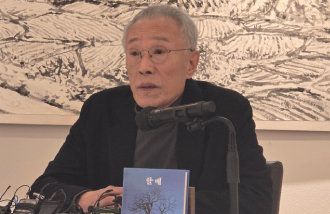Half of marginalized families fail to receive welfare assistance
Half of marginalized families fail to receive welfare assistance
Posted August. 25, 2022 07:59,
Updated August. 25, 2022 07:59
It has been revealed that half of the households that do manage to be selected as “marginalized families” through the government’s welfare blind spot identification system still do not receive welfare assistance. Only three out of 100 marginalized households were found out to be the recipient of stable public assistance, including the livelihood security system and assistance for the second-lowest income bracket. Critics say that the identification of those in the blind spot of welfare assistance is important, but more fundamentally, it is important to provide more concentrated assistance for the low-income households.
According to Rep. Lee Jong-seong of the People Power Party and the Ministry of Health and Welfare on Wednesday, a total of 523,900 people were identified as those marginalized by the existing welfare system. The identification was made based on 34 standards, assessed until July this year, such as whether their water supply or electricity has been cut off and whether they have deferred payment of health insurance fees.
However, only 271,102 people (51.8%) received assistance. A meagre 2.9 percent of those identified as the marginalized households became the beneficiaries of the public assistance, such as the livelihood security system and assistance for the second-lowest income bracket, which are provided until the beneficiaries are freed from poverty. Those who receive only temporary or one-time assistance were reported to be 1.2 percent (emergency welfare assistance) and 9.4 percent (welfare vouchers), respectively. Rep. Lee said that the government must devise measures to provide stable assistance, rather than pompously promoting its achievement of having identified those in the welfare blind-spot.
Meanwhile, the number of people newly identified as the marginalized from the government’s welfare assistance is going to be reduced. The number of beneficiaries who have been supported by the welfare blind-spot identification system was 18,318 in 2015, the first year of the system’s introduction, which gradually increased to 663,872 last year. But as only 270,000 people have been identified until July this year, the figure is likely to stand still at around 500,000 until the end of the year.
What’s worrisome is that those who managed to be captured by the welfare blind-spot identification system but whose whereabouts are unknown amounted to 1,177 in May alone. The government said it would consider mobilizing the police force to identify the marginalized households that are unreachable, just like those who have run away or those who are missing.
Keun-Hyung Yoo noel@donga.com




![이준석 “한동훈, 계양을 출마해야…장동혁, 머리에 용꿈 들어차”[정치를 부탁해]](https://dimg.donga.com/c/138/175/90/1/wps/NEWS/IMAGE/2025/12/10/132940178.1.jpg)


